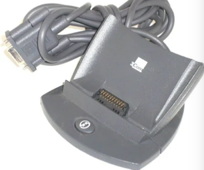Icons
Intro:




Standard USB QC USB PD USB Quick Power Charge Distribution
Quick Charge (QC)is a proprietary technology which allows for the charging of battery powered devices, primarily mobile phones, at levels above and beyond the typical 5 volts and 2-2.4 amps for which most USB standards allow.
The device being charged must ask for higher voltages, otherwise it sticks to the 5 V standard, so non QC devices can be connected to QC wall charger.
Charging power varies over the charging cycle. QC 3.0 ranges are 3.6 - 22 V; 2.6 or 4.6 A; Max of 36 W (12 V * 3 A)
USB Power Distribution (PD) was designed for laptops with up to 100 Watts.
It is similar to QC, providing variable voltage over the charging cycle
Typically QC and PD is supplied on the same UCB-C port on wall charge bricks and Charging Stations.
Several other rapid-charging technologies are based on Quick Charge 2.0; these include TurboPower (Motorola), Adaptive Fast Charging (Samsung), Dual-Engine Fast Charging (Vivo) and BoostMaster (Asus).
Huawei’s 10V/4A SuperCharge produces 40W and Samsung’s latest Adaptive Fast Charging produces 15W of juice.
It is designed to work USB Type-A, micro USB, and USB Type-C
USB-C MPD ?? - I couldn't find what this is. I think it's a typo.
MPD is an MPC (Music Production Center) Audio interface.
USB CABLE - AKAI MPD / MPK
Most devices are protected in that they will only draw the amount of current required despite higher capacity of a port.
To get higher voltage on QC ports they have to request it.
©
Laptop charging:
Almost all computers that charge via USB-C have a maximum charge speed of 60 watts—the 15-inch MacBook Pro can charge at up to 87 watts.
Usb-C Chargers provide the fastest and most efficient output current (5V/3a, 9V/3a, 12V/3a, 15V/3a, 20V/3a).
Max Watts for devices:
iPhone 6: 8 W
iPhone 7: 10.5 W
iPhone 8 & X: 12 W
iPhone 11 Pro: 18 W PD
iPad Pro: 18 W
Samsung Galaxy Note 10: 25 W
Samsung Galaxy Note 10+: 45 W
Laptops: 60 W
Macbook Pro 87 W
USB C Wall Charger, 18W PD 3.0 , Fast Charging $10
 In the 90's mobile devices used proprietary charging connectors connected to serial ports, which computers had before USB.
In the 90's mobile devices used proprietary charging connectors connected to serial ports, which computers had before USB.
Terms:
AICL Automatic Input Current Limit APSD Automatic Power Source Detection ACA Accessory charging adaptors HVDCP - High Voltage Dedicated Charging Port INOV - Intelligent Negotiation for Optimal Voltage PMIC - Power management integrated circuits SoC - State of Charge (0 - 100%) USBIF - USB Implementers Forum USB - Universal Serial Bus USB PD - USB Power Delivery VOCC - Voltage Open Loop Multi-step Constant-Current Charging by Oppo.